March 4, 2021/0 Comments/in News, Weather, Wildfire impact /by John Mead
Below are summaries from the National Significant Wildland Fire Potential Outlook, provided by the National Interagency Fire Center, for the period of March 2021 through June 2021. The full outlook can be located here.
Year-to-Date Statistics:
| Year-to-date statistics | Number of Fires | Acreage Burned |
| 2021 (01/01/21 – 03/03/21) | 2,986 | 60,064 |
| 2020 (01/01/20 – 03/03/20) | 3,230 | 67,370 |
| Percentage of 10-year Average | 65.5% | 63.8% |
Source: https://www.nifc.gov/fireInfo/nfn.htm
The month of February saw several large storms across the country, and that has contributed to fewer than average fires and acres burned for the month.
Observations in February:
Record setting cold temperatures and winter storms reached wide swaths of the Plains and the Southeast as cold arctic air moved into the area. Many areas were observing temperatures more than 15ºF below average and many areas set records for low temperatures. Much of the West and East Coasts saw average precipitation for the month. Snowfall and snow pack across the West is near or above the 30-year median, but the Sierra, southern Utah, and the Southwest are below the median.California saw multiple offshore wind events in February, but no significant fires were caused by these events.
Drought Forecast:
Drought conditions are forecast to continue for much of California, the Great Basin, and the Southwest into summer. Drying is also expected to increase across portions of the Plains and in Florida. Drought conditions will also intensify in the Intermountain West and southern High Plains.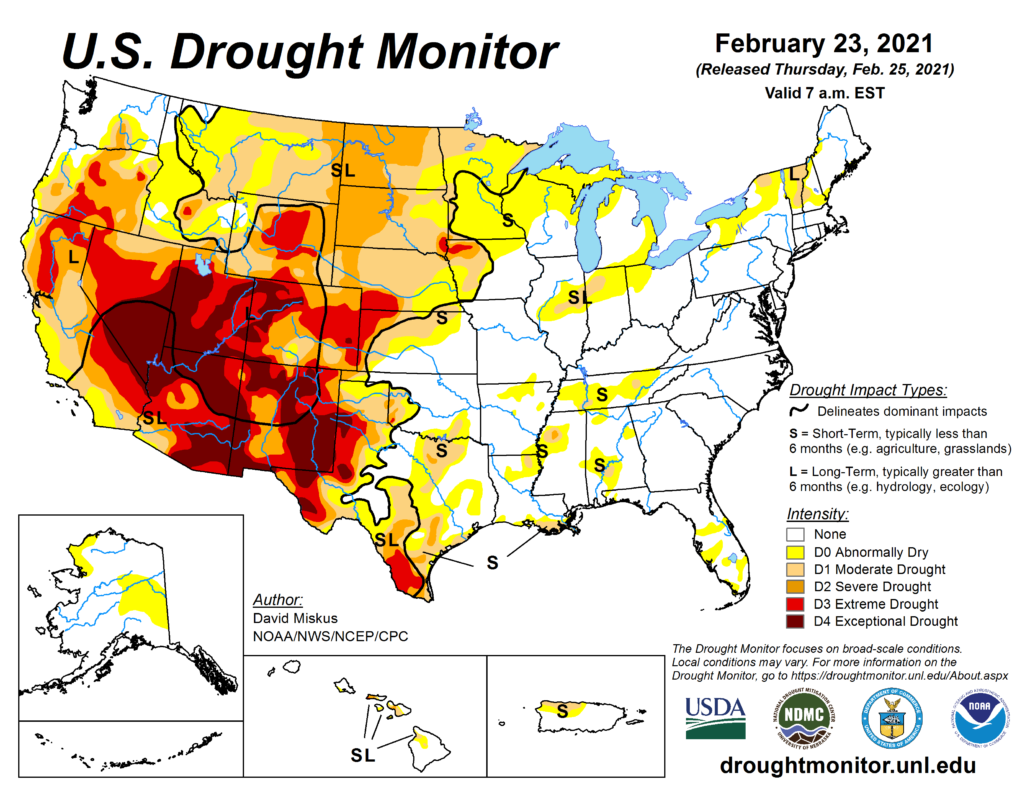
US Drought Monitor as of 23 February 2021
Wildland Fire Outlook for February-June:
The Climate Prediction Center forecasts that La Niña conditions will continue through at least March. There is a 60% chance that the El Niño Southern Oscillation pattern will turn neutral from April – June. However, new models are predicting a prolonged below average sea surface temperature in the Equatorial Pacific Ocean, which could extend La Niña conditions. Either way, these La Niña conditions will continue to drive warmer and drier than normal weather patterns in the coming months in the Southwest and southern High Plains.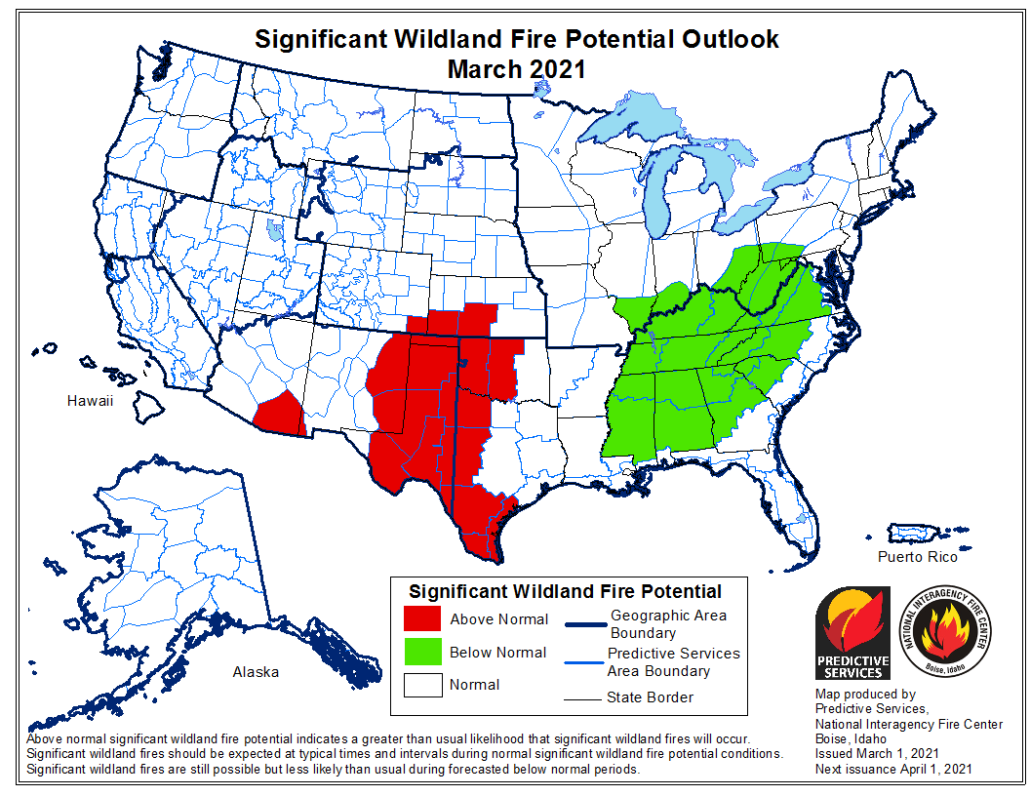
March 2021 Wildland Fire Potential Outlook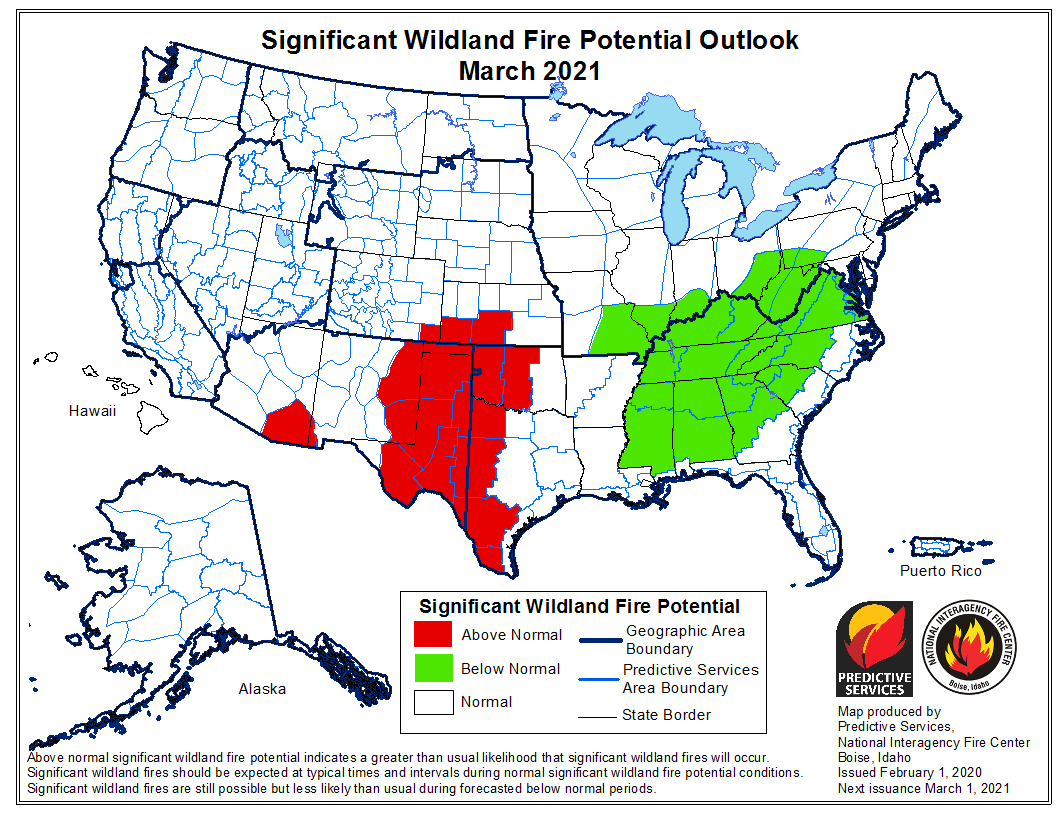
March 2021 Wildland Fire Potential Outlook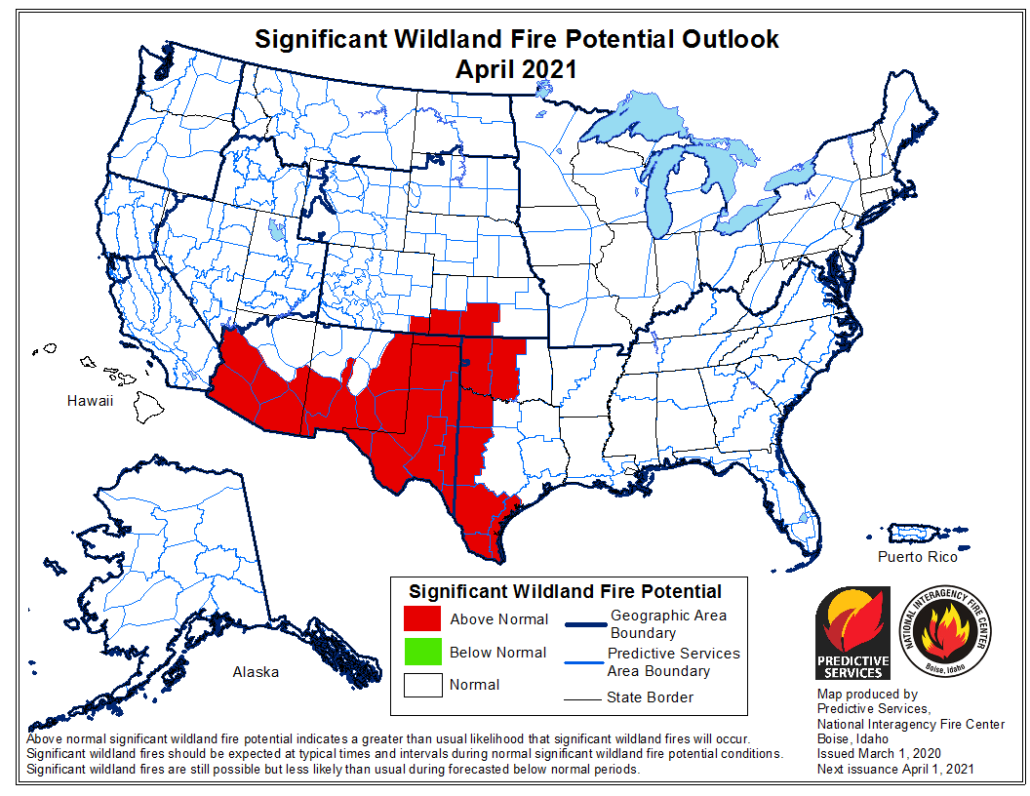
April 2021 Wildland Fire Potential Outlook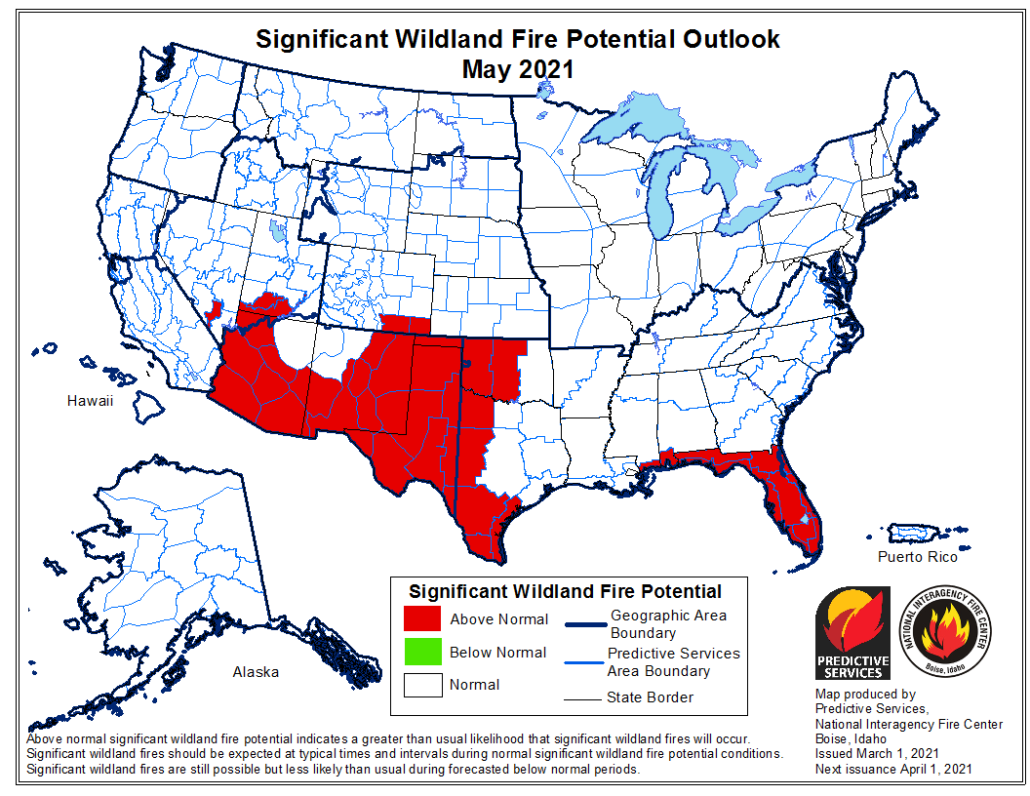
May 2021 Wildland Fire Potential Outlook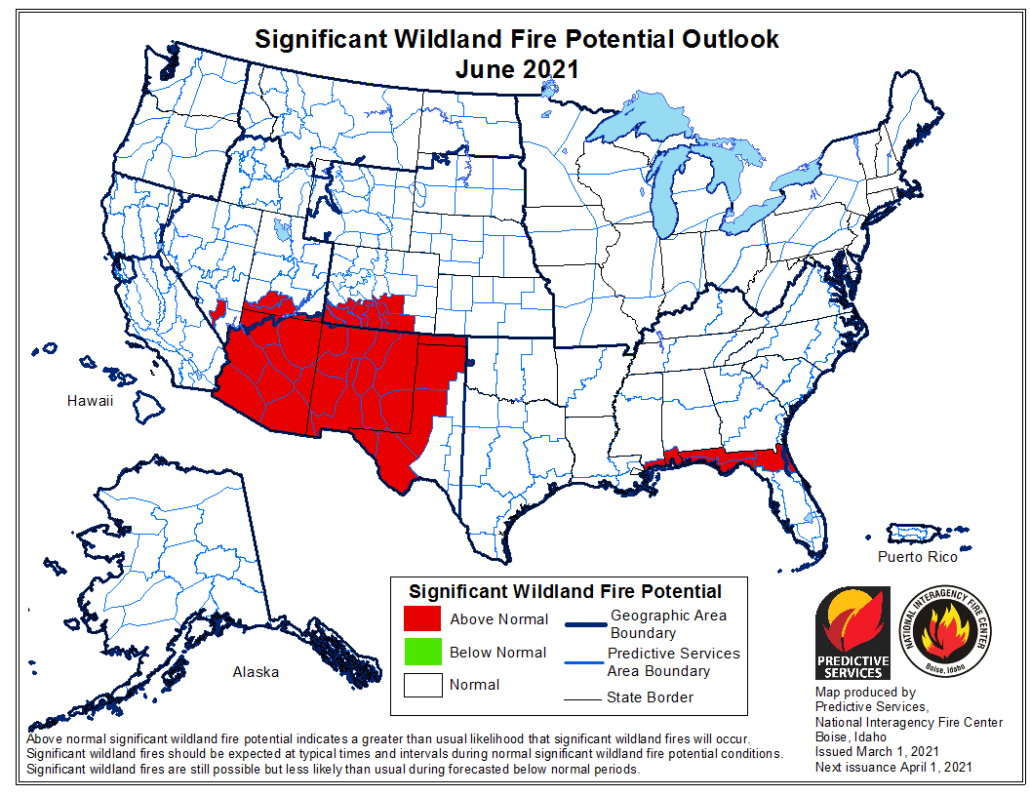
June 2021 Wildland Fire Potential Outlook
Source: NIFCTags:2021 Fire Outlook, 2021 Fire Season, fire outlook